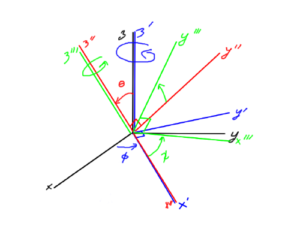I have a fairly monstrous set of classical mechanics notes that I accumulated when I was learning all about the theory of Lagrangians, Hamiltonians, and Noether’s theorem.
I also audited a few of the classes from the 2012 session of PHY354H1S, Advanced Classical Mechanics, taught by Prof. Erich Poppitz, at the University of Toronto, and have some notes and problems from those classes in this set of notes.
These notes are not self contained. In particular, there is fairly heavy use of geometric algebra in many of the problems, with assumptions that the reader is proficient with that algebra.
These notes (436 pages, 6″x9″) are available in the following formats:
- for free in PDF format (colour),
- on Amazon in paperback (black and white),
- as latex sources.
I’ve pressed the publish button on kindle-direct-publishing so that I could get a paper copy of these notes for myself. An extremely vicious edit is required. Until I do that editing (assuming I do), the price is set to the absolute minimum no commission price that Amazon let’s me offer (i.e. printing cost plus profit for Amazon.) I wouldn’t actually recommend that anybody buy this in it’s current form — download the pdf if you are interested.
I’m actually toying with the idea of rewriting these notes from scratch, creating an “Advanced Classical Mechanics, with Geometric Algebra” book out of some of the ideas. I could flush out many of the details that I explored originally, but add some actual structure and coherence to this mess of write-once-read-none junk. Tying things to a geometric algebra theme would be the value add proposition that could distinguish things from all the other classical mechanics books in the universe.
That said, this idea would be a very tough book project (for me), as I’d have to understand all the material enough to present it in a coherent fashion. I’d want to include and explore both Euclidean and relativistic Lagrangians, which would make the material tougher, but comprehensive. I don’t like the idea of assuming the reader is familiar with special relativity, but the thought of me having to include a self contained introduction to that topic that isn’t complete garbage is pretty intimidating. Especially if you consider that I’d also want to introduce STA, and help the reader understand the connections between all that material. There’s a lot of ideas that would all have to come together!
